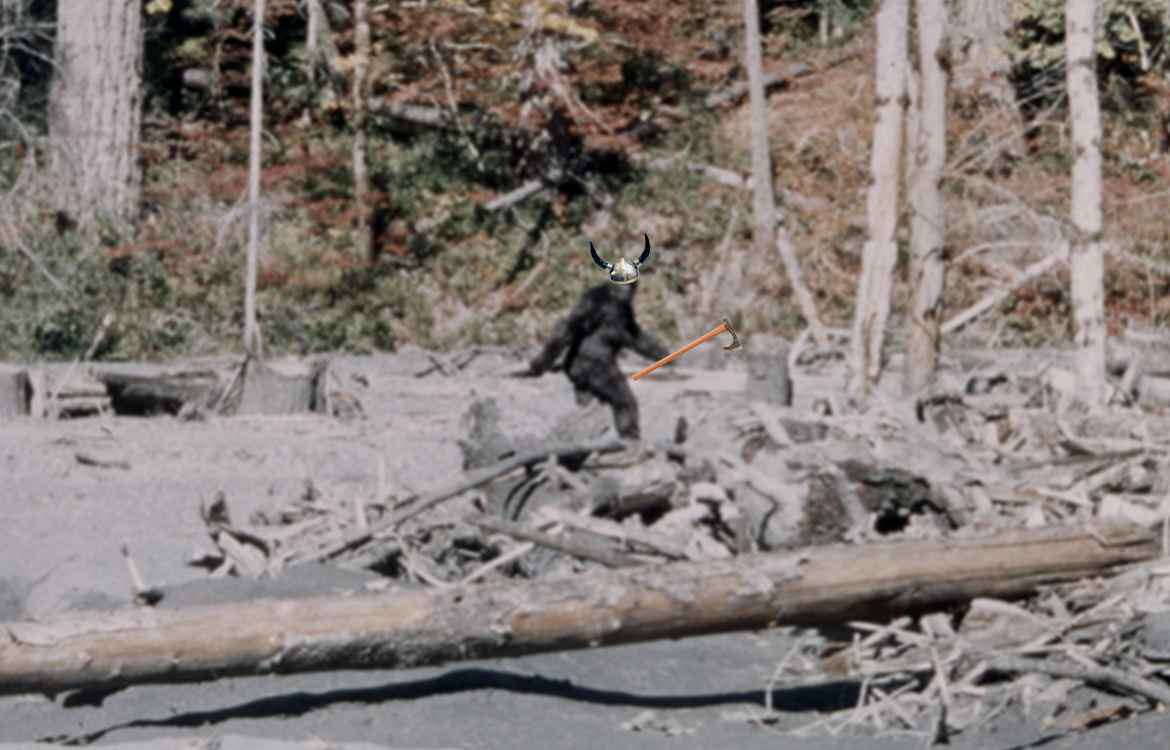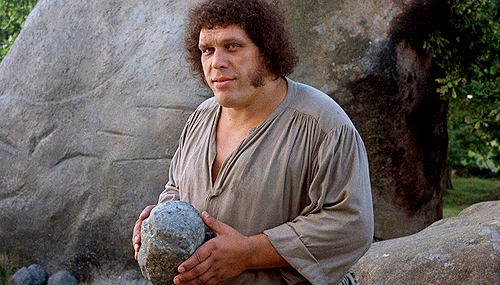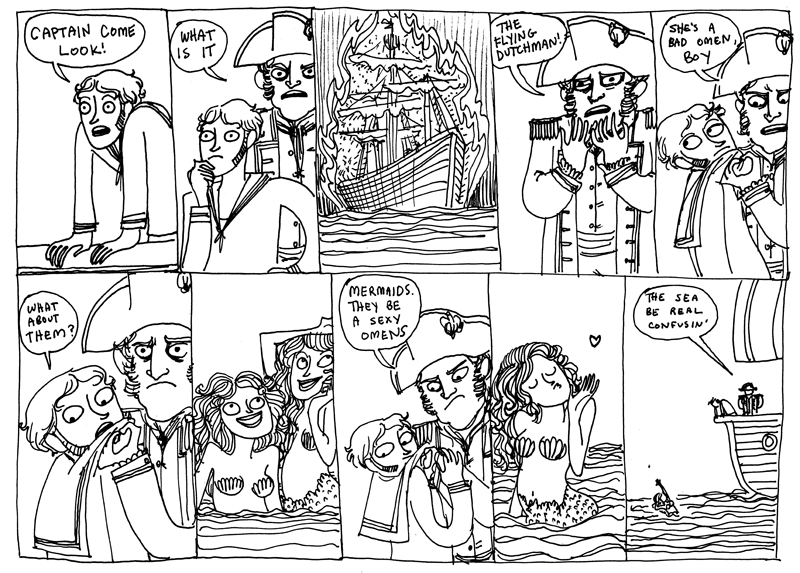Vikings became sasquatch: Collective memory of very hairy men?
So I was once halted in confusion during an argument with a friend. I don’t remember exactly, due to the location of the argument (a pub), but his hypothesis essentially boiled down to this:
- It is now known that Vikings made the transatlantic crossing around 1000 AD, and settled mainland America for a short period. Their settlements in Greenland and North America ultimately faltered, (perhaps due to growing isolation) and the modern revelation that this occurred is thanks to a pairing of archaeology and other research.
- Vikings were typically tall, hairy men, commonly with reddish hair.
- Sasquatches/bigfoot (bigfeet?) are typically considered tall, hairy, man-like creatures, also with reddish hair
- The sasquatch myth has to come from somewhere, and maybe is a residual communal memory of Viking visitors, corrupted over the centuries into its modern form.
blurry. photographic. evidence.
Immediately I considered the suggestion ridiculous. Without any facts to hand, I dismissed the hypothesis instantly (which is not to say I couldn’t come up with an evidence-based argument against it). My major problem with the argument was the final clause:
“It has to come from somewhere. There must be some element of truth to it”
Here’s where things got fully derailed in my mind. If I was to accept this premise, it brings up some potentially ludicrous interpretations of mythology and folklore. I think the example I gave was giants, which are almost ubiquitous in mythologies worldwide: oversize, under-civilised peoples that preceded the present group. Lots of groups also have stories of small people, often forest-bound and magical. I won’t accept that these are necessarily memories of some group of slightly taller, or slightly shorter peoples that came before. I think to do so fundamentally underestimates the level of human creativity.
Inconceivable.
People could easily conceive of larger or smaller versions of themselves, without having seen the 11th century equivalent of a basketball player. If you accept the sasquatches:Vikings reasoning, it brings all sorts of whacky concepts into play. Griffons are memories of lions wearing feather cloaks. Hindu deities were a bunch of dudes gesturing behind the backs of other dudes. Mermaids are just people wearing scaly pants.
Image by the amazing Kate Beaton
I think the iconography of folklore and mythology isn’t commemorative, but is conceptual, and often tempered with what makes for a good story. This is venturing dangerously into monomyth/archetypal territory, which I am desperately unqualified for, having never read Campbell or Jung, or even a single book about psychology I can remember. Werewolves and zombies don’t stick in the human consciousness because of our fascination with paleopathology and the very hairy or very dull men of the past, but because of our interest in the blurred line between man and beast, or mindlessness and the nature of humanity. I think a lot of these stories are created to address concepts important to society. I’m just not that convinced that folklore can always be interpreted as a garbled version of actual events.
ANALOGY – HYPOCRISY
So this is where I run into trouble. In my line of work, oral history is a hugely significant source of information. Archaeologists, particularly in colonial nations and among indigenous groups, often draw upon traditional accounts to provide additional context for their study of the material culture of past people. In a lot of ways, this is no different from archaeologist studying areas and time periods with written histories. But often there is a stigma to using these sources, and oral histories are considered by many to be more mutable, and therefore less reliable than written history. I frequently draw upon oral histories in order to understand where people lived, how they used the land over successive generations, and how that is manifested in the archaeological record. But the line between folklore, mythology, and oral histories is blurred. Genealogies can connect modern people directly to deities, and ancestral figures are often attributed supernatural traits or have supernatural adventures. I’ll happily relate to colleagues, friends or strangers a story I fully believe about an important ancestor a few generations back who was killed during a period of conflict between two particular groups. I can also buy that a story of an older explorer figure who dug holes across the island that become the lakes of today might be analogous to a journey of discovery. I’m not sure where I stand on the legendary discoverer’s battle with a giant octopus, but I’m willing to consider he was a figure who physically existed in the way I tend to understand historical figures existing. But sasquatch Vikings are a step too far for me.
More like King Harold BIGfoot. Get it? Ha! History jokes!
Is it that the former examples are part of my nation’s heritage, and that – even if imagined or real – they shaped its history and society? Is it that the stories of my home are genuine indigenous histories with indigenous meanings and interpretations, and sasquatch Vikings are a foreign interpretation of an indigenous story by a modern colonial individual, and that I recognise the legitimacy and importance of the former and not the latter? What’s the time-frame beyond which an oral history becomes legend, and legend, myth? I seem to personally draw the line at the supernatural or paranormal, but even mundane-ish stories are easy enough to concoct in entirety (c.f. Robin Hood is a fake guy).
It’s hard to be a rational human being, but some concepts just pull upon me to reject them out of hand. Sasquatch Vikings is one of them. The idea that “[everything] must have some element of truth” just doesn’t fly with me. But I myself sometimes look for such kernels in oral histories in my own work. How can I rectify this cognitive dissonance?








